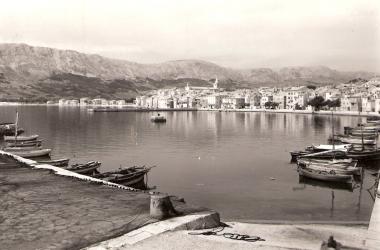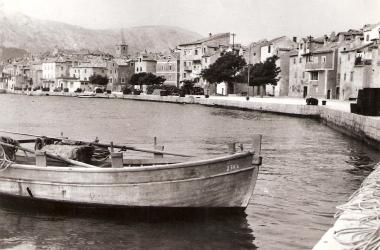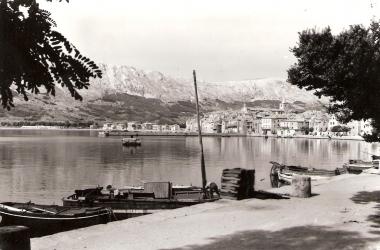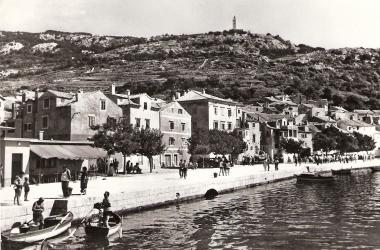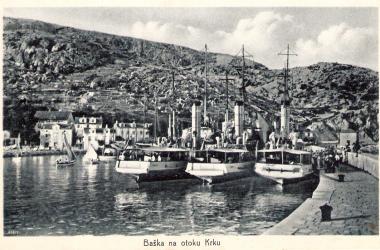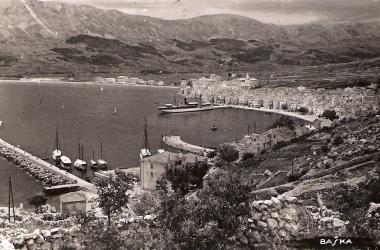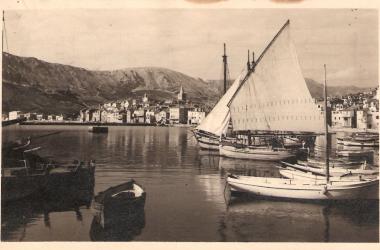Baška Port through the centuries
The beginnings of island and coastal shipping in Baška date back to the 16th century when the residents of the desolate settlement of Kaštel relocated to the coast “Podbaškun”, that is, “at the foot of Baška”. They initiated trading in goods with neighbouring settlements on the island, as well as the nearby islands of Rab, Lošinj and Cres. At the time, Senj was the most important and largest port they had contact with. Baška natives transported wine, cheese, oil, tomatoes, grapes, timber etc. on sailboats and oar-powered vessels to Rijeka and Pula. They also sailed southward, mostly importing wine and oil from Zadar, Šibenik, Split and Kotor. In terms of scope, this was short-sea shipping along the Croatian coast, with occasional trips to the Italian ports of Trieste, Venice, Ravenna and Ancona. It was also a trading operation because local produce, such as grapes and tomatoes, were exchanged for products from other areas and subsequently traded further. There was also a shipyard in Baška because ships required repairs and overhauls as a result of the increased shipping. The people of Baška were skilled shipbuilders (”kalafats”) who would become sought-after and find success in the arsenals of Trieste, Pula and Rijeka. Wooden boats, such as the “bracera”, “bragoc” and “traget”, were most frequently built and used for transport; however, increasing long-haul trades prompted the construction of larger sailing vessels, leading to the launching of trabaccolos, cutters and loggers.
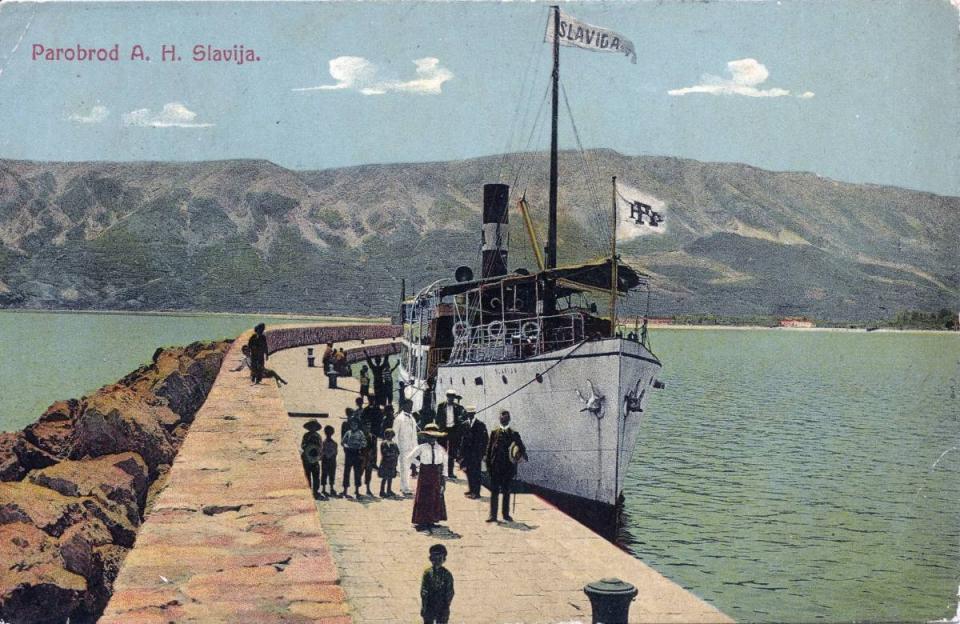
The port was expanded in 1892 with the construction of a new, 220 m-long breakwater. A beacon was installed and a “garofulin” (berth) was built, along with new bollards for the secure stern-to mooring of ships during inclement weather. Sometime later, a passenger terminal and a second beacon were constructed.
From 1900 to the beginning of World War I, the Baška merchant navy reached its peak, employing 90 ships with a total deadweight of 2000 reg. tonnage. The fleet mainly consisted of trabaccolos and “braceras” that transported goods from Dalmatia and the Senj hinterland to Rijeka and Trieste. Due to the growth of maritime transport, sailors were required to become nautical professionals and, as a result, in 1912, there were as many as 15 Baška natives trained to navigate ships across the Adriatic.
The first steamships operating on the regular Senj-Rijeka route (the boat Hrvat set sail for Rijeka from Senj in 1872) sent the local ship operators into decline, while World War I brought about the collapse of shipping and trading, which increased emigration. Its favourable position and climate would make Baška a tourist hub of the island and the entire Croatian Littoral in the interwar period, only second to Crikvenica and Rab. With maritime transport developing under such economic circumstances, Baška became a waypoint on the Senj-Sušak line of steamships manufactured by Jadranska Plovidba d.d. Sušak.
At the same time, Baška had its own small fleet that, in 1937, included 28 out of all 69 vessels on the island.
The aftermath of World War II was devastating to Baška’s port and fleet. All the ships had sunk, while the ports, quaysides and shipyards had been destroyed. After the war, the ships were repaired and equipped only for the essential transport of goods and passengers.
The first regular passenger-shipping line of Jadrolinija’s steamships that moored in Baška was introduced in 1951 on the Rab-Rijeka route, with six berths in the summer and four in the winter.
A major change occurred in 1969 with the Senj-Baška-Lopar line, which was fully discontinued in 1989.
The recent completion of the first and second upgrading phases of the Baška port and the extension of the Vela Riva breakwater paves the way for reintroducing this historically significant shipping lane.
Since the establishment of the County Port Authorities in 1999, the Baška port has been managed by the County Port Authority of Krk, which commenced the renovation of Mala Riva in 2014. The works were finished in 2015, giving Baška a quay that was fully equipped for the berthing of tourist ships on circular tours, thus making the port a vital waypoint on Adriatic cruises.
The Baška port still needs to undergo the third and fourth upgrading phases this year, which will round off this project by providing the historically important port with everything its inhabitants and visitors have been sorely missing over the years, such as safety, a high standard, new berths and top-notch mooring conditions.
Upon completion of the project, the four phases of which include the extensions of Vela Riva and Mala Riva by 100 m and 50 m, respectively, three piers at Garofulin quay, and in the fourth phase a "T" quay and a pier at the old quay, the total costs of the works will exceed HRK 75 mil./EUR 10 mil.
Historical source: Krk Almanac, vol. 8, Krk, 1976
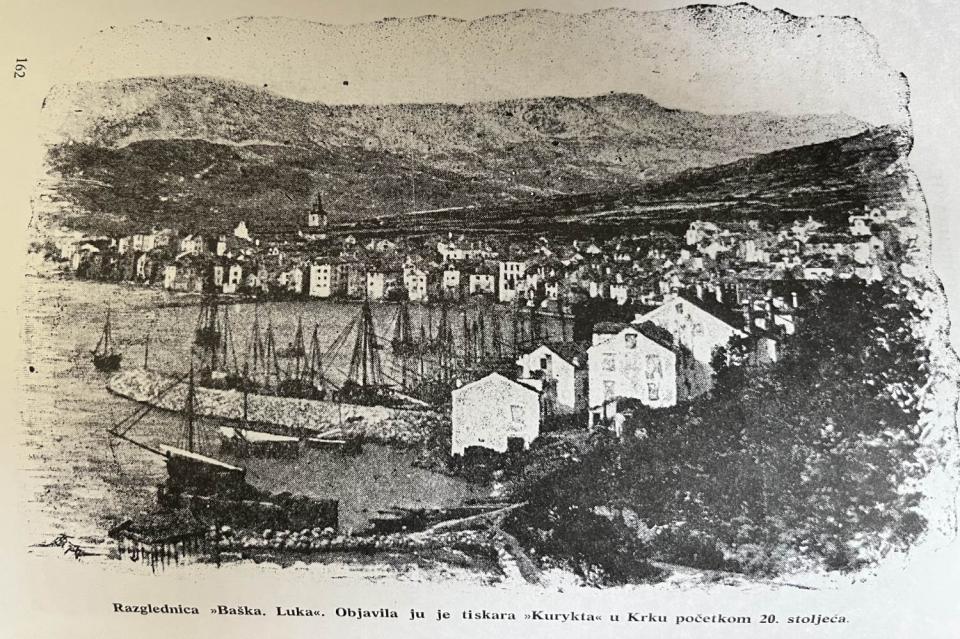
Photos: Tourist Board of the Baška Municipality https://www.visitbaska.hr/en


